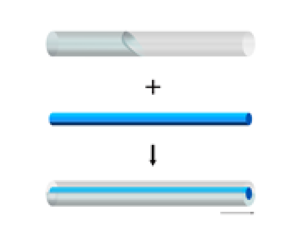Article contents
Inside rod induced horizontal capillary emptying
Published online by Cambridge University Press: 11 August 2021
Abstract

The removal of a liquid blockage from a tube is of importance in many processes. If the Bond number (which measures the relative size of the gravitational force by comparison with the surface tension force on the blockage plug) is large enough, then the tube will become non-occluding automatically. If not, then other measures are required to remove the blockage and the insertion of a rod is one such measure. We investigate this situation in a horizontal capillary in a downward gravity field. Theoretical results are obtained and compared with experiments. We observe that a rod insertion can cause a change from liquid plug to non-occlusion in a horizontal capillary. For uniform inner and outer contact angles, compared with the case without an inside rod, the maximum of the critical emptying line decreases significantly, but the minimum decreases a little only for a large enough value of the ratio of inner radius to outer radius (χ). We find that changing the contact angles of the inserted tube can significantly affect the non-occluding of the tube. The minimum of critical emptying line can be lowered clearly, and the minimum for a large enough value of χ is much lower than that reached for a circular tube. The insertion of a hydrophobic (hydrophilic) rod with a large enough radius can make the liquid emptying easier in a horizontal hydrophilic (hydrophobic) capillary. This provides an effective method of triggering drainage of a fluid from a capillary in applications such as optofluidics and microfluidics.
JFM classification
- Type
- JFM Papers
- Information
- Copyright
- © The Author(s), 2021. Published by Cambridge University Press
References
- 4
- Cited by



